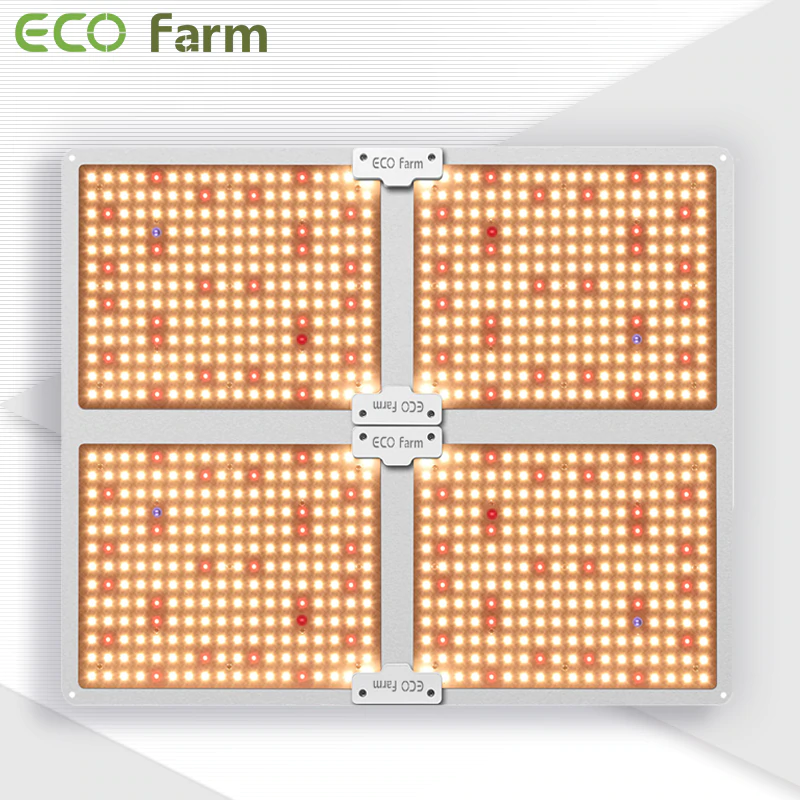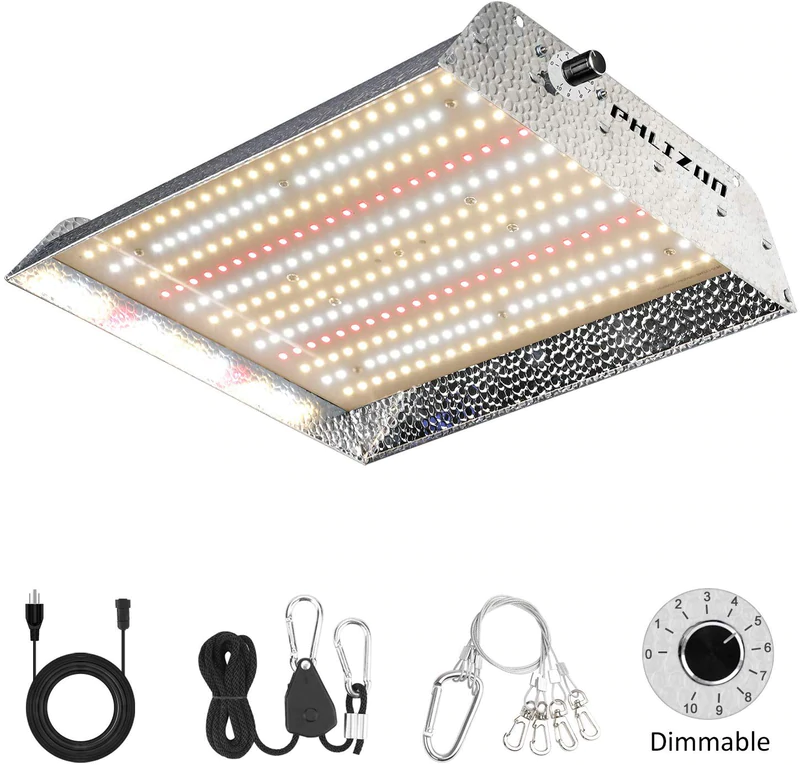- Home
- SHOP ECO FARM
-
TOP BRANDS
-
Grow Lights Brands
- Adjust-A-Wing
- Apollo Horticulture
- Bestva
- Black Dog LED
- California Lightworks
- ChilLED Grow Light
- Eco Farm
- HLG - Horticulture Lighting Group
- Kingled
- Kind LED
- Mars Hydro
- Morsen
- Neilo
- NextLight
- Phlizon
- PlatinumLed
- Roleadro
- Optic LED Grow Lights
- ViparSpectra
- Vivosun
- EYE Hortilux
- IPOWER
- NanoLux
- Phantom grow light
- Gavita grow lights
- Grower's Choice
- Lumatek
- Maxibright
- Yearld Pro
- ThinkGrow
- Crecer Lighting
- Green Sunshine Electric Sky
- fohse aries
- loriflux
- luxx
- fluence
- iluminar
- Lex
- LTC
- Rayonled
- FGI
- PHOTONTEK
- Grow Tents & Kits Brands
- Extraction & Harvest Brands
- Climate Control & Hydroponic Brands
-
Grow Lights Brands
- COMPANY INFO
- COOPERATE WITH US
- Blog
- Sign in
- Home
-
SHOP ECO FARM
- ECO Farm Grow Lights
- ECO Farm LED Grow Lights
- ECO Farm Quantum Board
- ECO Farm Samsung LED Grow Lights
- ECO Farm COB Grow Lights
- ECO Farm Commercial Lights
- ECO Farm Supplemental Grow Light
- ECO Farm Fluorescent grow lights
- ECO Farm HPS & MH Grow Lights
- ECO Farm CMH Grow Lights
- ECO Farm HID/CMH Bulbs & Ballasts
- ECO Farm Grow Tents & Kits
- ECO Farm 2x2ft Grow Kits
- ECO Farm 3x3ft Grow Kits
- ECO Farm 3.3x3.3ft Grow Kits
- ECO Farm 4x4ft Grow Kits
- ECO Farm 5x5ft Grow Kits
- ECO Farm Grow Tent - Standard Style
- ECO Farm Grow Tent - Extension & Roof & Lodge Style
- ECO Farm Extraction & Harvest
- ECO Farm Rosin Press Machine
- ECO Farm Dry & Wet Trimmers
- ECO Farm Oil Accessories
- ECO Farm Medicinal Plants Grinder
- ECO Farm Medicinal Plants Containers
- ECO Farm Medicinal Plants Dryer
- ECO Farm Refrigeration Dryer
- ECO Farm Climate Control & Other Accessories
- ECO Farm Inline Duct Fans
- ECO Farm Oscillating Fans
- ECO Farm Exhaust Fans
- ECO Farm Air Filter
- ECO Farm Duct Muffler
- ECO Farm Ventilation Kits
- ECO Farm Plant Humidifiers
- ECO Farm Plant Dehumidifiers
- ECO Farm Hydroponic Accessories
- ECO Farm Other Accessories
- ECO Farm Hydroponics Microscopes
-
TOP BRANDS
- Grow Lights Brands
- Adjust-A-Wing
- Apollo Horticulture
- Bestva
- Black Dog LED
- California Lightworks
- ChilLED Grow Light
- Eco Farm
- HLG - Horticulture Lighting Group
- Kingled
- Kind LED
- Mars Hydro
- Morsen
- Neilo
- NextLight
- Phlizon
- PlatinumLed
- Roleadro
- Optic LED Grow Lights
- ViparSpectra
- Vivosun
- EYE Hortilux
- IPOWER
- NanoLux
- Phantom grow light
- Gavita grow lights
- Grower's Choice
- Lumatek
- Maxibright
- Yearld Pro
- ThinkGrow
- Crecer Lighting
- Green Sunshine Electric Sky
- fohse aries
- loriflux
- luxx
- fluence
- iluminar
- Lex
- LTC
- Rayonled
- FGI
- PHOTONTEK
- Grow Tents & Kits Brands
- Apollo Horticulture
- Black Box
- CoolGrows
- Eco Farm
- GrowLab
- Gorilla Grow Tents
- Mars Hydro
- Quictent
- Secret Jardin
- Unit Farm
- TopoGrow
- VIVOSUN
- Topolite
-
COMPANY INFO
-
COOPERATE WITH US
- Blog
Best 600W Quantum Board LED Grow Lights for Indoor Gardening in 2023
March 31, 2023
Keeping houseplants alive can be a daunting task. You need to position them to make sure they get the right amount of light, and you have to water them properly — as plants can be overwatered. Thankfully, while water is easy to find in most places, it may not be possible to find proper lighting. You may live in an area that doesn’t get much sunlight, your home may not have many windows, or placing your plants somewhere in your home may not fit your aesthetic. That’s where indoor grow lights come in: no matter your lighting situation, you can use them to properly care for your plants.
Why use LED Grow lights?
There are many reasons to use LED grow lights when growing plants.
Affordability
For many, the main reason is that they are relatively inexpensive compared to pricier HID setups. This is especially true if you are growing a small number of plants.
This is not always the case. When LEDs first became popular among growers, the technology was very new and not fully perfected. Think how expensive and inconvenient, and often not worth it, cutting-edge technology like smartphones was when they first came out.
Reduce Water Consumption
Not only are LED lights more energy efficient, but they also save water. As you know by now, HID lamps consume a lot of energy which in turn produces even more heat. This can significantly increase the temperature in the grow room, causing your plants to use more water. Anything that reduces water usage is good for the environment, not to mention good for your utility bills too.
Durability
Finally, LED lights last longer than HID or CFL bulbs, ensuring years of use before needing to be replaced. Traditional grow lights only last 20,000 hours. In comparison, LED bulbs last more than twice as long, up to 50,000 hours and sometimes 100,000 hours. That’s five times the life of HID lights!
ECO Farm LM301B UV&IR 600W Quantum Board

Features:
ECO Farm LED Grow Lights provide powerful light output and uniform canopy penetration to maximize yields. Excellent full spectrum LED grow light designed with full spectrum (3000K), red light 660nm and IR 730nm and UV 395nm, infinitely close to natural light, best for all plant growth stages, fast plant response from seed to flowering, increased yield and crop quality . This grow light uses the most efficient and safest LED grow light, SAMSUNG LM301B diode (2.7 umol/J), which does not emit a lot of heat, effectively saving energy and electricity bills. This grow light allows you to get 30% higher yields and save up to 50% energy compared to the old fuzzy LED lights. Designed for indoor growers, this LED Quantum Panel uses aluminium to cool it instead of a fan, giving you a fanless and quiet growing experience.
Horticulture Lighting Group HLG 550 V2

Features:
The HLG Quantum Board light is well made as it has a larger aluminium panel and a dimmable MeanWell driver to control the intensity of the light. You can replace a single-ended 1000 watt HID, with a white light quantum LED grow light, your plants will grow quickly at all stages and get higher yields than similar light models. Growers often use it to increase plants production in the grow room. Simply plug it in and enjoy the maximum harvest. The grow lights use aluminium heat sinks to manage and reduce heat without creating noise in the growing environment. At full capacity, it barely consumes 480 watts of power. Otherwise, the dimming option allows you to reduce power consumption by up to 200 watts.
Phlizon 600W Dimmable Plant LED Grow Light

Features:
Over 90% highly reflective aluminium of this Phlizon grow light ensures the quickly flourish of your plants, light output PPFD value is 327 umol/m² hanging at 18".High reflectivity aluminium hood boosts reflectivity by 20% compared to standard aluminium reflectors; Contouring of the polished surface ensures no hot spots or dead spots. The newest high efficient SMD leds , higher light intensity, less light decay , better lumens and PAR values than ordinary lamp beads. It runs at a lower temperature and can bring higher energy conversion and longer life. This waterproof grow light is a full-cycle lighting solution for all growing environments. The intensity of light can be adjusted according to the needs of plants.
What to Consider When Choosing LED Grow Lights
The following sections detail some of the most important qualities to keep in mind when purchasing the best LED grow lights for your needs.
Spectrum
Natural sunlight has all the colors on the electromagnetic spectrum. Some LED lights can only reproduce certain color frequencies, while full-spectrum white LED lights can produce all the shades needed for each stage of the growing process.
Blue light helps plants grow in the earliest stages of their life. This is the first color a plant can absorb in its vegetative state.
Vegetatives also use violet light; however, it is not as effective for photosynthesis as blue light.
Red light aids later growth and is essential for flower buds to bloom.
White light contains all colors in the spectrum. Used alone, it works for every developmental stage.
Strength
Comparing LED grow lights is a bit difficult because manufacturers use a variety of metrics to measure how powerful their lights are and how much light they emit. The brightness of LED lights is measured in lumens. Seedlings need about 2,000 lumens per square foot to thrive, while flowering plants may need as many as 10,000 lumens.
While lumens measure visible light, biologists typically use photosynthetic photon flux (PPF) or photosynthetic photon flux density (PPFD) to measure how much light houseplants are actually absorbing. PPF is measured in μmol/s (or micromoles per second), which is the number of photons emitted per second. PPFD is also measured in micromoles/m2/s and measures the optical density distributed per square meter per second. The higher the PPF and PPFD, the more efficient the light should be.
Heat Output
One of the risks of using grow lights is that the heat from the bulbs can damage the plants. However, LED lights emit very little heat relative to the amount of light they produce. They do generate some heat though, so many models come with built-in cooling systems to ensure proper temperature regulation.
Some LED lights have aluminum heat sinks, others are equipped with fans. Units with fans can be loud, so shoppers will want to factor noise levels into their selection when choosing grow lights.
Conclusion
All in all, using LED grow lights is a great way to grow plants indoors, but it requires some knowledge and expertise. Remember to choose the right spectrum, use high-quality LED grow lights, adjust light distance and duration, and pay attention to your plants’ watering, nutrient, and environmental needs. Keep these tips in mind, and you can create a successful indoor garden with LED grow lights.
